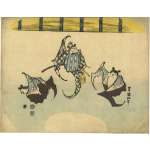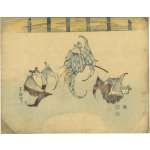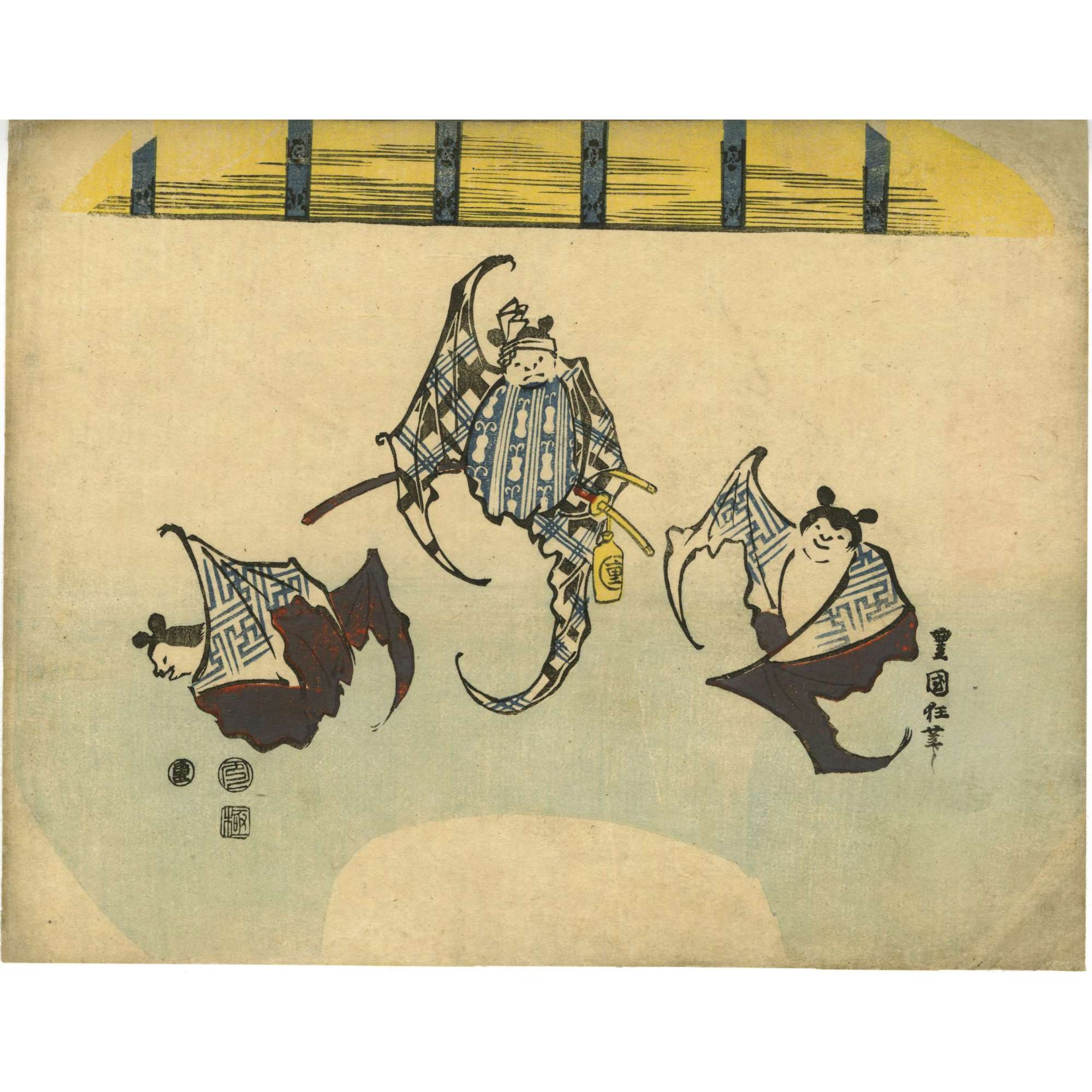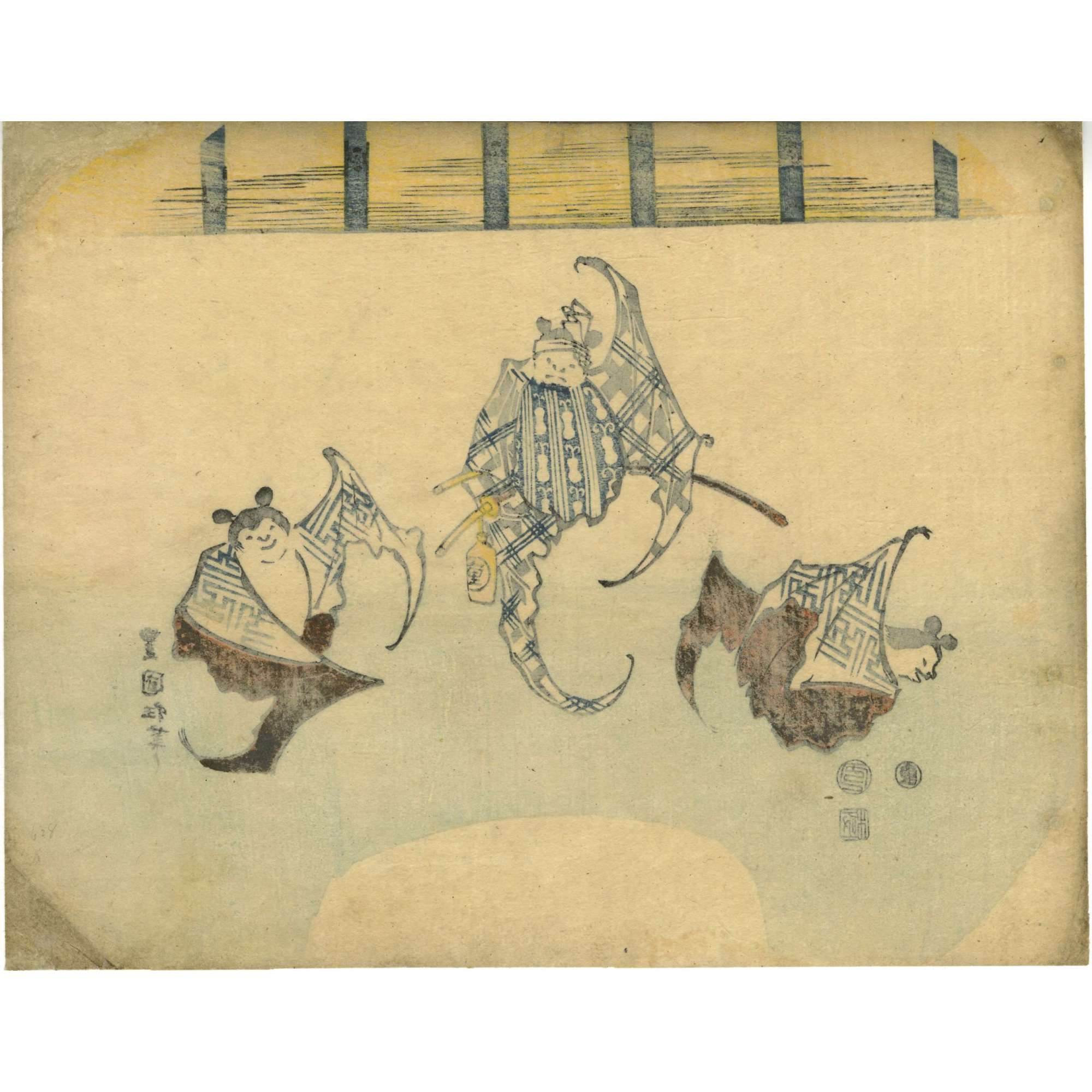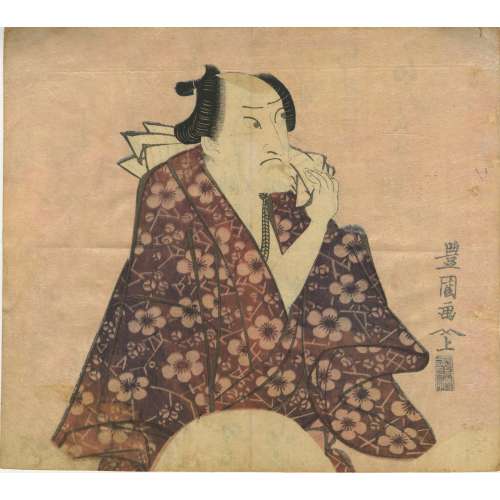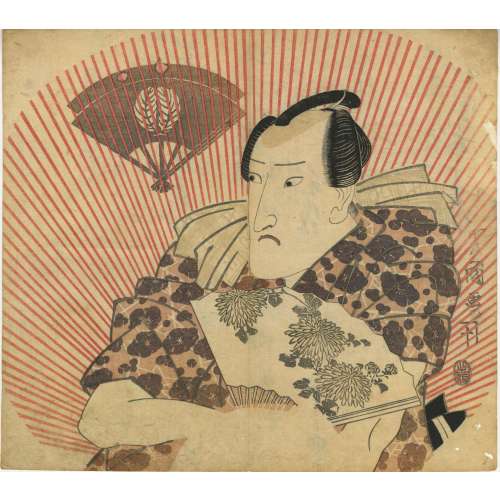Artist: Utagawa Toyokuni II [歌川豊国二代] a.k.a. Toyoshige [豊重] (Japanese, (1777 – 1835)
Signed: 豊国狂筆 (Toyokuni kyō-hitsu, “mad brush of Toyokuni”)
Publisher: Maru-Jū (丸重), seal Jū (重), Marks reference 08-079 | U190a (1826–1829, only on fan prints)
Censor Seal: Kiwame + Bunsei 12 (Year of the Ox [丑], 1829)
Media: Uchiwa-e (fan print), color woodblock print, 230 × 293 mm
A fantastical kabuki-themed scene depicting three anthropomorphic bats, dressed in Edo-period costumes. The central figure, likely Ichikawa Danjūrō VII (市川團十郎七, 1791–1859), is distinguished by his costume featuring a gourd motif (瓢箪, hyōtan)—a symbol closely linked to the Ichikawa family. He wears two swords, further identifying him as a kabuki hero, and carries a sake flask marked with what appears to be the publisher’s emblem. His raised arm (or wing?) suggests a dramatic action, possibly striking or threatening the bat figure on the left, who recoils in response.
The two side bats, also dressed in patterned kimono, display expressions contrasting with the central figure—one appearing startled, while the other remains cheerful. The oxidized lead-orange pigment used in the lower portions of their wings suggests depth and texture.
This print reflects Danjūrō VII’s association with both the bat (蝙蝠, kōmori) and the double gourd. Bats were considered lucky symbols due to their resemblance to the character of “good fortune” (福, fuku), and Danjūrō VII often incorporated bat motifs into his stage costumes. The Ichikawa family’s crest, the mimasu (三升, “three squares”), was more commonly used, but the double gourd and bat imagery appeared in promotional materials, reinforcing his theatrical identity.


